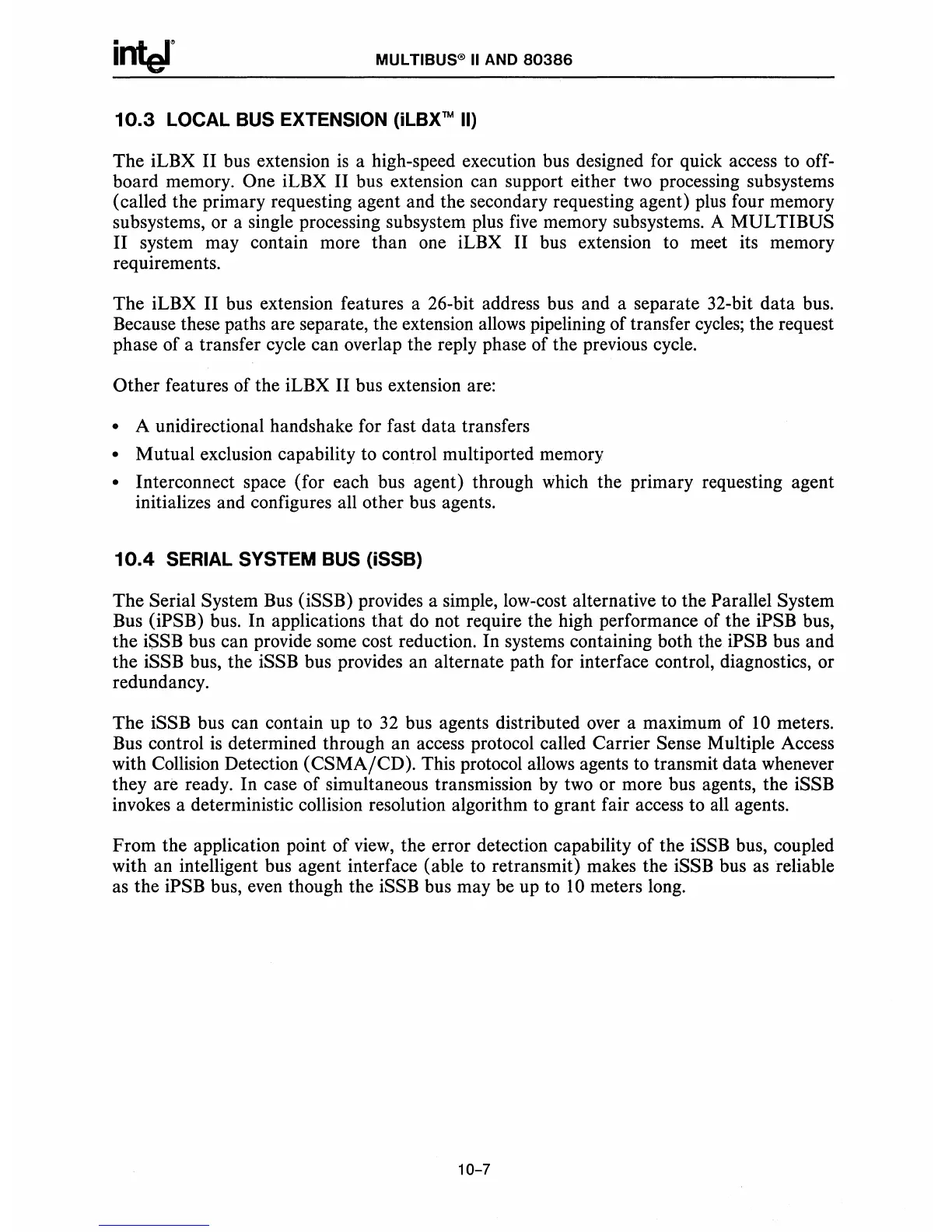MUL TIBUS@ II AND
80386
10.3
LOCAL
BUS
EXTENSION
(iLBX™
II)
The iLBX II bus extension
is
a high-speed execution bus designed for quick access to off-
board memory. One iLBX II bus extension can support either two processing subsystems
(called the primary requesting agent and the secondary requesting agent) plus four memory
subsystems, or a single processing subsystem plus
five
memory subsystems. A MULTIBUS
II system may contain more than one iLBX II bus extension to meet its memory
requirements.
The iLBX II bus extension features a 26-bit address bus and a separate 32-bit data bus.
Because these paths are separate, the extension allows pipelining of transfer
cycles;
the request
phase of a transfer cycle can overlap the reply phase of the previous cycle.
Other features of the iLBX II bus extension are:
• A unidirectional handshake for fast data transfers
• Mutual exclusion capability to control multiported memory
• Interconnect space (for each bus agent) through which the primary requesting agent
initializes and configures all other bus agents.
10.4
SERIAL SYSTEM BUS (iSSB)
The Serial System Bus (iSSB) provides a simple, low-cost alternative to the Parallel System
Bus (iPSB) bus. In applications
that
do
not require the high performance of the iPSB bus,
the iSSB bus can provide some cost reduction. In systems containing both the iPSB bus and
the iSSB bus, the iSSB bus provides an alternate path for interface control, diagnostics, or
redundancy.
The iSSB bus can contain up to
32
bus agents distributed over a maximum of
10
meters.
Bus control
is
determined through an access protocol called Carrier Sense Multiple Access
with Collision Detection (CSMA/CD). This protocol allows agents to transmit data whenever
they are ready. In case of simultaneous transmission by two or more bus agents, the iSSB
invokes a deterministic collision resolution algorithm to grant fair access to all agents.
From the application point of
view,
the error detection capability of the iSSB bus, coupled
with an intelligent bus agent interface (able to retransmit) makes the iSSB bus as reliable
as the iPSB bus, even though the iSSB bus may be up to
10
meters long.
10-7

